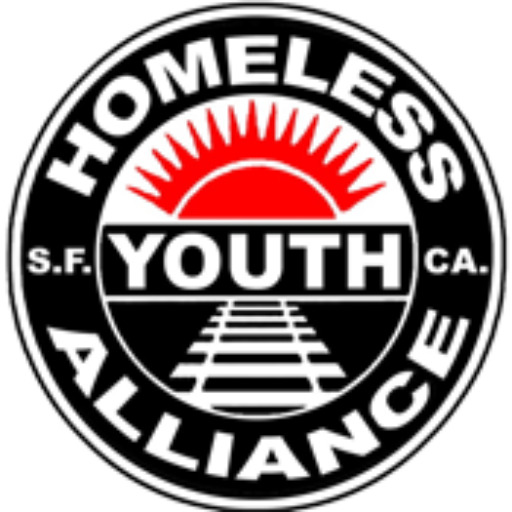
In 1992, the City of San Francisco commissioned a study of youth experiencing homelessness in the Haight Ashbury neighborhood. This study demonstrated that young people who are unhoused have a high incidence of health and psychological problems as well as a lack of access to health and human services. In response, coordinated efforts to reach these youth began springing up in the Haight. Two such efforts were the San Francisco Needle Exchange (SFNE) and the Haight Ashbury Youth Outreach Team (HAYOT). It was with HAYOT that Mary Howe, who experienced homelessness herself as a young person, began to work with youth in the neighborhood.
In 2006, seven years after Mary first got involved, she merged the two organizations to form Homeless Youth Alliance: the city’s only grassroots harm reduction coalition designed by and for the marginalized and underserved youth experiencing homelessness of the Haight Ashbury district. Mary along side dedicated staff and the youth we work with has shaped and built an agency that reaches 13,000 at-risk youth annually, providing a drop-in center, harm reduction education, and medical and mental health services. HYA is the only youth-focused agency in San Francisco whose staff mirrors the target population it serves: most of the agency’s 14 staff and 30 volunteers have histories that include homelessness, many of whom utilized HYA’s services while living on the street. HYA trains constituents to be peer educators, helping them transcend the conditioned passivity and powerlessness that lead to self-destructive choices. As a result, many former participants have gone on to pursue careers in human services and counseling.
On Christmas of 2013 after 12 years at the same location HYA lost our lease at the corner of Haight and Cole Streets. The loss the our drop-in center was more than a loss of bricks and mortar; It was an emotional blow to the young people who’d come to identify our space with the acceptance, safety and sense of belonging that were unavailable to them elsewhere. Under our roof, they weren’t “homeless” first and “people” second. They knew they could cross HYA’s threshold and enter a place where their entire selves, not just their physical appearance or housing status, would be taken into account; and where their opinions, pasts, preferences, and experiences were listened to, validated, and valued.
Shortly after the closure of our drop-in HYA applied for several storefronts to secure a new space, unfortunately due to the stigma and discrimination of our work we realized it was going to be harder than we had thought. At that point we began applying for office-only space (over 100 applications have been submitted) and continue to struggle to secure one.
While our team works administratively out of a nearby location, all of our work with youth happens in the streets and parks where they live. Over two later, HYA is still a mobile program. Our six outreach counselors and our staff therapist canvass the streets and the parks of the Haight in the mornings, building relationships with the neighborhood’s youth who are homeless, and distributing snacks and hygiene supplies. Their afternoons are reserved for individual appointments for case management or therapy, which take place on the street or in a café. We now run our evening syringe access and disposal program — where youth can still get on-demand medical care, mental health care, HIV testing, and trainings in overdose prevention and safer injection practices — from the Haight Ashbury Free Clinic, which is located up two very steep flights of stairs.
Despite our struggles to identify a new drop-in center, we still manage to serve this population every day. Young people have given us the following testimonials:
• “Anytime I need anything, I find someone on the street who knows where the HYA people are. I can always find you when I need to. You guys are doing a pretty damn good job considering you don’t even have a building.”
• “There’s always gonna be an outstanding need for you to do what you’re doing to help us get what we need.”
• “You guys brighten my day whenever I see you — and my dogs love you too.”
• “Some other places try to shove beliefs down our throats, and we have to lie to them about our lives. You guys don’t do that. We can be honest with you.”
These testimonials are heartening, but we are mindful of the fact that youth in the Haight are now suffering without a stable indoor place to decompress, take a shower, eat a hot meal, and have a confidential session with a case manager or therapist without having to do so in a public space like a park bench or café. And that’s why we’ve been fighting and striving to secure a new indoor location for our drop-in center in the Haight.
While the ill-informed narrative by some people that homelessness in the Haight is a “lifestyle choice” aided and abetted by human services, the past two years we have been without a space demonstrates the exact opposite. The numbers of youth living on the Haight’s streets have only increased since our drop-in closed its doors. When we lost our space, one of our participants, a young man named Josh — who’s been housed for a year now, thanks to his own drive and determination as well as the perseverance and hard work of his HYA case manager, Chelsea — said “When services go away, we don’t just disappear.” He’s right. We’ve been saying it for years: disenfranchised, traumatized young people will always come to the Haight, regardless of how inhospitable it becomes.
In honor of all the young people experiencing homelessness, HYA continues on.
